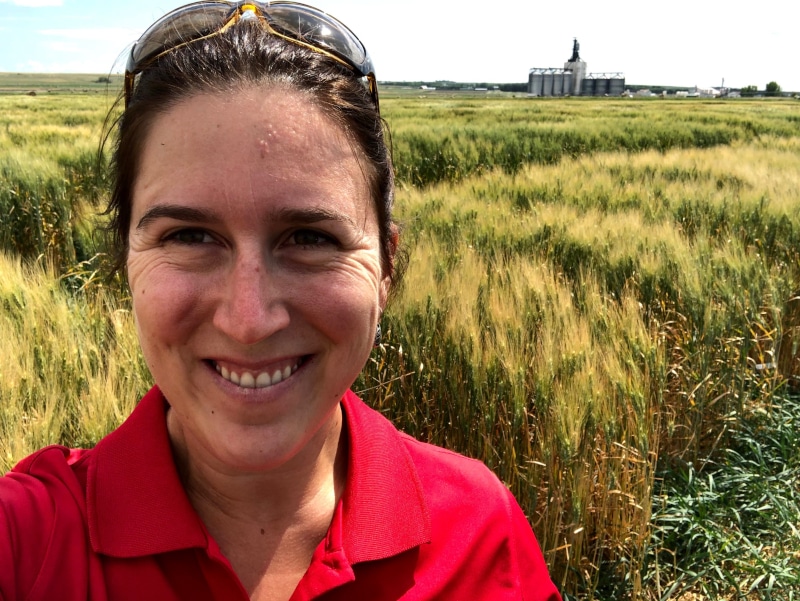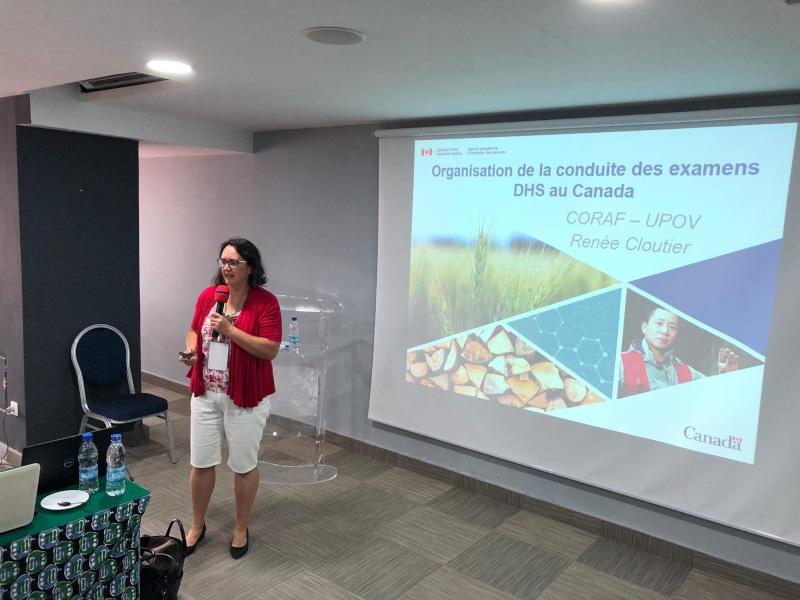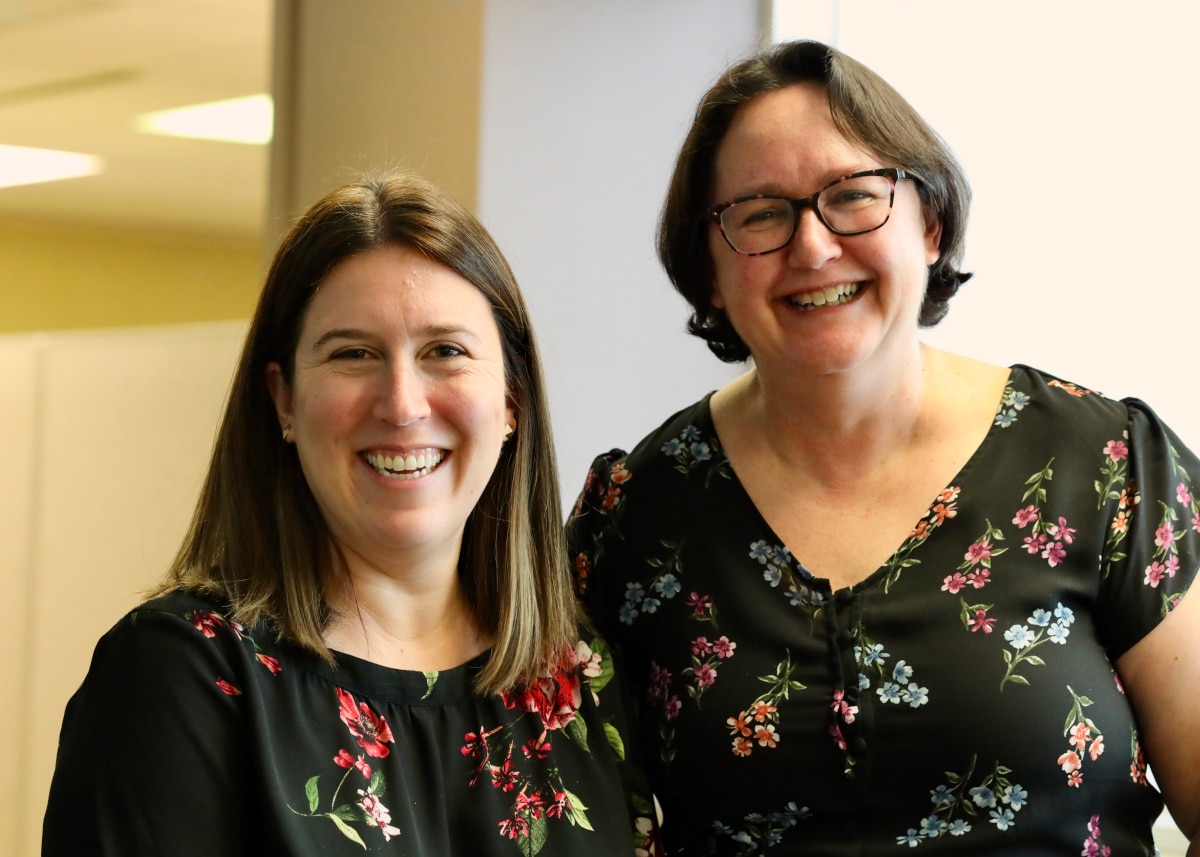Many UPOV countries don’t have the resources to develop centralized variety testing systems. Canada’s Plant Breeders’ Rights Office is helping.
While the global Plant Breeders’ Rights (PBR) framework is getting stronger, it also faces challenges. Chief among them is the fact that many countries do not have the resources to develop centralized variety testing systems.
True to form for a country known as a valued collaborator, Canada is helping change that through the efforts of its Plant Breeders’ Rights Office based at the Canadian Food Inspection Agency (CFIA) in Ottawa.
Working at the helm of that system are Renée Cloutier and Ashley Balchin, two key members of the PBR Office. Both work as examiners in the PBR Office to verify the comparative tests and trials and to see whether or not the new candidate variety meets the requirements to obtain intellectual property protection.
Canada’s PBR system relies on comparative tests and trials to determine if a variety under consideration for PBR is distinct, uniform and stable, a concept known as DUS. Whereas many countries have a state-run testing system for PBR, Canada has a breeder-run testing system, in which the trials are conducted by the breeder/applicant, agent or someone contracted by the applicant.
Balchin and Cloutier are part of a small team, only six examiners, that reviews the applicant’s data as well as conducting an independent trial examination to verify results. Essentially, a PBR examiner reviews an application for intellectual property (IP) rights on a plant variety.
It’s a system that’s of high value to plant breeders not just in Canada, but worldwide.
“The Canadian breeder-based variety testing system is a high-quality and cost-efficient system that can be adopted by prospective new UPOV members. It can remove an important limiting factor for the global expansion of the system,” says Leontino Taveira, head of technical affairs and regional development for the International Union for the Protection of New Varieties of Plants (UPOV).

A Distinct System
Applying for PBR protection on a plant variety in Canada is a unique process and is not the same as applying for variety registration. Cloutier explains that for variety registration, breeders have to compare and show that their new variety is equal or better than industry standards.
“It is different with PBR. You’re taking your new candidate variety and you’re comparing it to the most similar variety. If you can show that your variety is distinct from the most similar ones, then you’re able to have a strong PBR protection. There’s a nuance there,” she says.
“We don’t look at merit; we’re looking at the fact that the variety is distinct, uniform and stable, meeting the conditions to obtain IP protection. Generally, the IP framework does not make a decision whether a variety is good, or better than the previous variety, that is the role of the marketplace to sort out. The objectives of variety registration and PBR processes are very different, and unique from one another.”
That understanding of the subtleties of PBR is what helps set Canada’s PBR Office and its staff apart on the world stage, Taveira says.
According to Taveira, staff of the Canadian PBR Office are becoming increasingly more important in supporting UPOV members to accede and implement the latest act of the UPOV Convention, known as UPOV 91.
Cloutier is the current chair of the UPOV Technical Working Party for Agricultural Crops. Balchin is chair of the Technical Working Party for Ornamental Plants and Forest Trees. Both are actively involved in developing test guidelines for variety examination.
Canada’s PBR Office is also promoting the use of the online application tool UPOV PRISMA to facilitate filing applications for plant variety protection in Canada and abroad. This is particularly useful for small and medium sized enterprises overcoming language barriers to filing applications abroad and having access to all the procedures required to protect and make their varieties available to more farmers.
“I look at all that we do as promoting plants and promoting agriculture and horticulture. It benefits everybody; not just the breeders, but the farmers, producers and nurseries — and at the end of the day, consumers as well,” Balchin says.
The 37-year-old became a PBR examiner after growing up in Ottawa in a family of public servants mostly involved in agriculture. She did her undergrad in biology at the University of Guelph.
“I got a summer job between semesters working for the Eastern cereal and oilseed research station here in Ottawa. I would come back and work in agricultural research in the summer months as a summer student in plant physiology. So, I had some exposure to various crops and working with a research team,” she recalls.
“I was near graduating looking for work and got wind of a job involving plant breeders’ rights, and honestly didn’t know much about it at the time. When I found out what type of work it was, and what the job would entail, it really interested me. That was 15 years ago.”
Cloutier hails from a rural community in northern Ontario and got her master’s in biology at Laurentian University. While working on that degree, she did some work at the Great Lakes Forestry Centre in Sault Ste. Marie with a tree physiologist. After moving to the United States, she returned to Canada where she did her PhD in horticulture at the University of Guelph.
After joining the CFIA in 2008, she was eventually steered toward the PBR field and became an examiner with the PBR Office in 2013.
“I’ve always been interested in how plants adapt to environmental conditions. I felt like being a PBR examiner put me right in the middle of that. There’s a high threshold to get PBR on a plant variety, so to get to work with breeders in that capacity was really fascinating for me.”

Supporting Policymakers
The recent study IP Canada 2020 Report shows the positive impact of Canada’s ratification of UPOV and has put the Canadian PBR Office staff in a unique position to provide fact-based support for policymakers wanting to enhance the effectiveness of PVP systems in other UPOV member countries, Taveira says.
According to the report, Canada is a major destination and source of IP rights globally, with almost 160,000 applications for patents, trademarks, and industrial designs coming to the Canadian Intellectual Property Office and going out of Canada annually. The same trend applies to PBR. Applicants can be foreign or domestic, private or public, and range in size from individuals to large multi-national corporations.
Cloutier, Balchin and PBR Office staff play a key role in that. Hilary Papworth, senior technical manager for the NIAB Group in the United Kingdom, has 28 years’ experience delivering trials on behalf of commercial clients and governmental bodies. As the organization has grown (it’s tripled in size over the past decade), it’s worked closely with the Canadian PBR Office developing guidance for testing new crops that are common to the U.K. and Canada.
The NIAB Group (formerly the National Institute of Agricultural Botany, established over a century ago) provides independent agronomy and science-based technical and commercial services to government, the seed industry and the wider agricultural and horticultural industries in the U.K.
“I frequently contact the Canadian office when we have queries about varieties that may have been trialed in Canada that we haven’t seen over here in the U.K., or when it’s difficult for us to get access to materials and we’re trying to gather more information to make the whole process work smoothly and in a harmonized way,” Papworth says.
“It’s that interaction between our two offices that makes things work smoothly for the whole system.”
Margaret Wallace agrees. As joint head of the Agricultural Crop Characterisation group at the NIAB Group, she helps deliver all the DUS testing at NIAB and the seed certification system for agricultural species in England and Wales. She deals with the Canadian PBR Office regularly.
“Renée and I met through UPOV. It became clear very quickly that the Canadian system is very different from ours. In Europe, everybody has much the same testing system, whereas the Canadian system is quite different. Renée and I kind of formed a bond really quickly, just talking about our mutual experiences and trying to understand each other’s systems,” Wallace says.
“We both started in our current jobs around at about the same time, so it was nice to have somebody to learn with along the way and try and harmonize our PBR system as much as possible, which is important within UPOV, to come up with those well-defined, harmonized guidelines that will work for all UPOV member countries.”
A good example of enabling that functionality across UPOV member states is Cloutier’s work in PBR training in Senegal. When the African country was looking for international assistance with implementing a PBR framework, it needed input from countries with French-speaking examiners. As a bilingual examiner, Cloutier was able to highlight Canada’s well-established framework and experiences to help develop Senegal’s PBR framework.
Currently it’s possible to obtain effective PBR protection in 28 African countries. In Senegal, PBR protection is available through the regional African Intellectual Property Organisation system. OAPI registrations extend automatically to all member states.
“There’s a push to have more African countries become members of UPOV, so they need to look at how they can make that happen. Canada has been a real model to the world in this regard,” Cloutier says.
Balchin has also represented Canada on the global stage to strengthen PBR frameworks in UPOV member states. She worked with the United States Department of Agriculture and is currently working with Trinidad and Tobago to similarly train and build capacity for PBR in that country. This has branched into work with Jamaica and other smaller countries that are looking to structure their PBR system to encourage breeding and new varieties.
“We’re a very small PBR office — only nine people in total — and we serve all of Canada. Our closest colleagues are our international ones in other countries. The best kind of training we can get or networking we can do is with other PBR offices around the world. Renée and I both relied heavily on the experience of not only our colleagues here in Canada, but also internationally, when we started out in this,” Balchin says.
“It’s quite a community; there’s a lot of information shared in terms of testing protocols and decision making. Renée and I have been given opportunities to give back and provide training and share our expertise. After all these years it’s great to be in a position where we can start giving back.”












